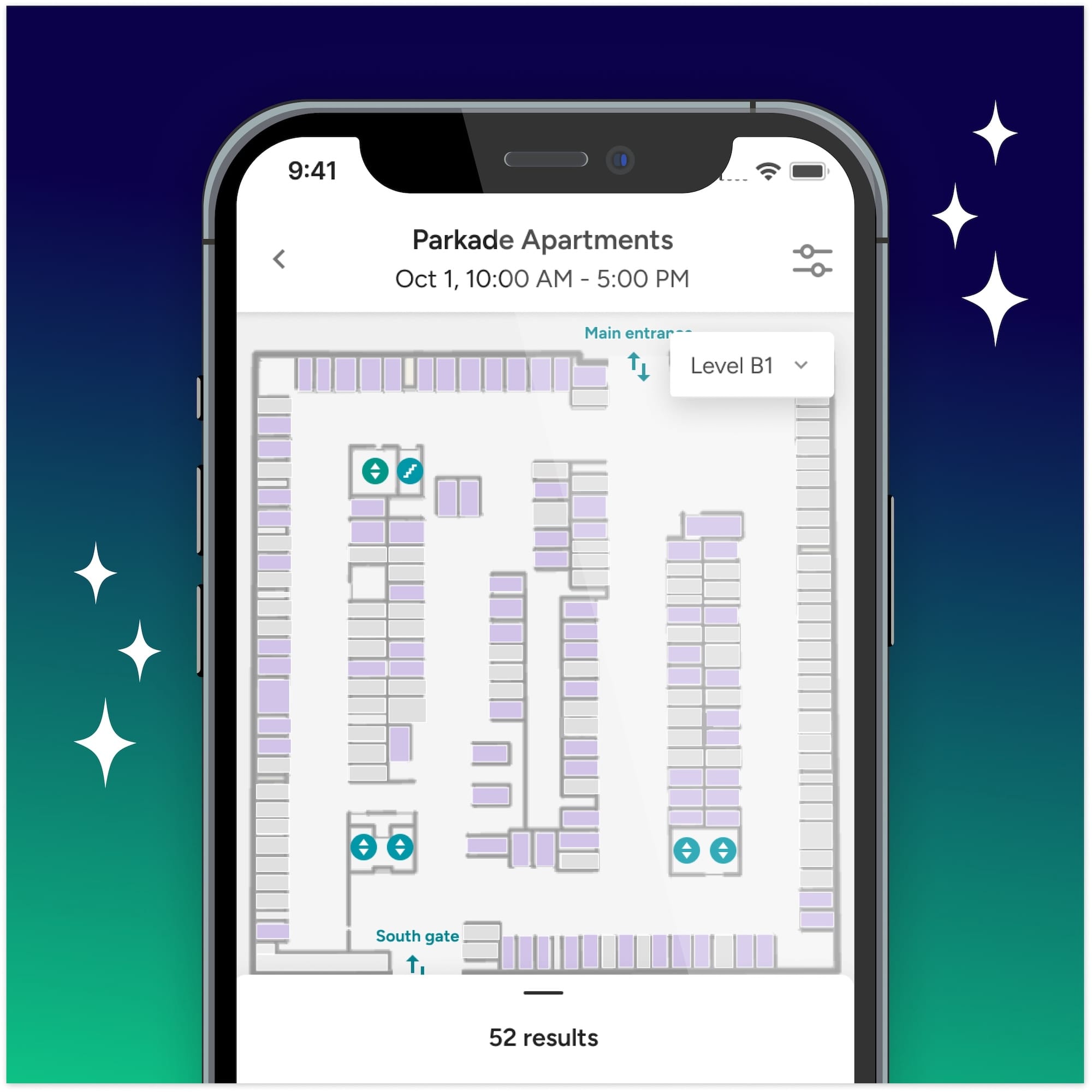

TABLE OF CONTENTS
Every property manager or real estate owner has strategies for increasing revenue at their property. Income can come from many sources, such as monthly rent, parking, and other ancillary revenue sources like laundry or amenity usage fees. However, when it comes to a property’s financial health, revenue is only one side of the story.
The more important number to focus on is net operating income (NOI).
NOI is the total revenue that a property generates minus all necessary operating expenses.
In real estate investment, NOI measures profitability. To see the full picture of a property’s financial health, this number is crucial. Revenue alone is less meaningful if a property’s incurred operating expenses are tipping the scale too far in the other direction, resulting in a loss.
Calculate NOI by subtracting your Operating Expenses from your Gross Operating Income (GOI).
Net Operating Income = Gross Operating Income - Operating Expenses

Let’s dig a little deeper into what’s included in each of these categories.
To calculate your GOI, you add up your PRI and other income and then subtract your vacancy and credit loss.
We touched briefly on the different components of gross operating income and operating expenses, but let’s break it down a little more to make sure you’re including every single possible revenue stream or expense when you calculate NOI.
Rent is typically the primary source of income for real estate. For most properties, rent comprises about 85-95% of the total yearly revenue.
While there are some utilities that residents may be billed for directly like gas and power, bills for some other utilities, like trash, water, and sewage, are sent to the property. Some properties may choose to include this in rent, while many will bill residents for their portion through a system connected to their PMS. This charge can be a flat fee or based on usage.
This is extremely important to track. Because the building will be footing the bill initially, including this reimbursement in the revenue can help to directly offset those expenses.
The money you bring in within this category includes your long-term parking fees, short-term parking (typically guest parking revenue), and in some cases, EV charging fees if you don’t provide free charging.
On-site laundry machines can bring in some extra revenue. Typically, properties make about $2.50 for every laundry load completed. For a 4-plex, it would add up to around $1,000/year on average, and that number would scale upward for larger communities. The portion of your units that have in-unit laundry, however, will have a major impact on the average revenue brought in.
While it’s not common to charge for amenities such as pools, gyms, and workspaces, increasingly more properties are offering up rentals for premium amenities. Many communities now have large common areas that can be rented out for a fee (typically $50-100 per hour) to be used for events.
Other premium amenities like podcast studios have been coming into vogue in boutique hotels over the last year and are also beginning to be incorporated into many new multi-family builds, especially in entrepreneurial and content-focused hubs like Los Angeles.
There are a handful of other miscellaneous income sources that you should gather in your roundup of income, too, like application fees, late fees, and pet rent.
Operating expenses are the day-to-day costs associated with running a multi-family property. Typically, these expenses add up to around 35-50% of gross operating income for multi-family properties. This is different from capital expenses, also sometimes referred to as “capex,” which are the major investments in the property that are meant to generate long-term benefits and boost property value.
NOI for real estate only takes into account the operating expenses, include the following:
These fees are paid to property management companies for managing the daily operations of the property, including leasing, rent collection, maintenance oversight, tenant relations, and general day-to-day operations at the property.
Typically, property management fees eat up between 4-10% of gross rental income, depending on the level of services they provide.
You will inevitably have costs that pop up consistently to keep your property in good condition. This includes routine maintenance like landscaping, cleaning, and servicing HVAC systems. There are also more unexpected needs for repairs that will arise, like plumbing issues, roof damage, or repairs to parking gates.
These costs will vary significantly based on your property’s age, size, and condition. Older buildings tend to have higher maintenance costs due to more frequent repairs and replacements.
Utilities are another major expense for real estate. This includes the costs for water, electricity, gas, trash removal, valet trash, etc.
Properties will likely receive a bill that includes both property-wide utilities as well as unit-specific utilities. Depending on the terms in place, properties may recoup these costs from tenants (see revenue section above), but the costs should still be included in expenses regardless.
To minimize utilities expenses, many properties invest in energy-efficient systems and appliances.
Insurance is often required for multi-family properties. There are two types of insurance—one that covers physical damage and liability insurance to protect against legal claims by tenants or third parties.
The cost for these insurance premiums is on the rise in real estate, increasing by about 33% on average year-over-year. Typically, properties can expect to pay about $180 per apartment unit, comprising about 8% of a property owner's quarterly per-unit operating expenses.
If there is valet on site, properties also have to invest in insurance to cover potential damage done to people’s vehicles.
Property taxes, a significant fixed expense for multi-family properties, are based on the property's assessed value and local tax rates, which can vary widely. Generally, the tax rate is between 0.5% and 2% of the property’s assessed value. New Jersey has one of the highest average property tax rates at 1.89%, while states like Hawaii and Alabama have much lower rates, at 0.26% and 0.33%, respectively
Tax payments are either paid annually, semi-annually, or quarterly, depending on local regulations.
There are several costs associated with increasing exposure for your property. Marketing and advertising costs can include activities like online listings, promotional materials, social media ads, resident events, website fees, professional photography, or fees for an outsourced marketing agency.
As it seems to be the theme for many of these expenses, the percentage of total expenses that marketing costs take up can vary greatly depending on property size, location, current occupancy level, etc. Typically, properties spend between 3-7% of their revenue on marketing.
Admin costs cover the day-to-day management and operation of the property. This includes things like office supplies, software, legal fees, and accounting services. You can expect to pay between 4-10% of gross revenue on administrative costs.
NOI isn’t just a metric that you pull to display on a dashboard at your investor meetings. It’s a critical strategic tool for multi-family properties. By accurately calculating and continuously improving this metric, teams are able to use it in many ways both internally and externally.
Real estate teams leverage NOI for:

Capitalization rate, or “cap rate,” is a popular term in the real estate industry. For investors, Cap Rate is calculated as NOI / Purchase Price, and it’s used to determine the risk of the investment. As a general rule of thumb, real estate investors look for a cap rate between 5%-10%. A cap rate below 5% would suggest very little upside compared to the return on risk-free government bonds. Meanwhile, a cap rate above 10% indicates that the investment is high risk, which may turn off the average investor.
For multi-family owners, when taken along with the risk of vacancy, NOI can be used to value their property and derive a suitable purchase price. This calculation is expressed as Property Value = NOI / Cap Rate.

Let’s look at a few examples to see how it all plays together.
Say that Apartment A generates $150,000 in yearly NOI, but it’s located in a rural area with a high potential for vacancy if someone moves out. Since an investor will see this as a riskier investment, ownership may decide to apply a higher cap rate than average to offset the risk, say 12%.
As you can see, a higher cap rate results in a lower purchase price than if the investment were average risk.
Now, say Apartment B also generates $150,000 in yearly NOI, but it’s located in a popular metropolitan area with very little risk for vacancy. Ownership may decide to apply a low cap rate to indicate the stability of the investment, say 5%.
The lower perceived risk justifies a lower cap rate, which results in a higher price for the property when compared to Apartment A, even though NOI remains the same.
Let’s say ownership at Apartment A has a purchase price in mind of $1.5M. Knowing that the vacancy risk for the property will remain the same, they can look to improving NOI to raise the property’s value and justify a higher asking price. The calculation is simple: NOI = Cap Rate * Property Value.

In this example, ownership would potentially need to generate an additional $30,000 before they could justify the higher asking price.
Strong and consistent NOI is one of the most impactful metrics there is in the real estate world. When your NOI is steadily growing, many more doors we mentioned above open up to you, from securing better financing terms to increasing the overall value of your property.
Here are several strategies to help you boost your NOI.
Although the majority of your revenue will come from rent, boosting ancillary revenue is a lucrative strategy to positive impact your NOI. Some popular sources include pet rent, premium units with upgraded amenities, upcharges for short-term leases, vending machines, on-site laundry, storage rentals, and housekeeping services.
One of the most impactful, yet underutilized, source of ancillary revenue, though, is parking. Many properties provide free parking by bundling it in with their rent. Or others may charge for it but don’t optimize their pricing strategy. When you are strategic about managing parking correctly and pricing it appropriately, you can bring in thousands or even tens of thousands of dollars extra per month.
Regularly auditing expenses and negotiating better rates for services and supplies can help you lower your expenses and lead to a healthier NOI. Reviewing contracts with service providers and seeking competitive bids can reduce costs without compromising quality.
Investing in better property management software can also help you to streamline operations, reduce administrative burdens, and uncover further cost-saving opportunities.
Some great opportunities to decrease OpEx are:
Investing in energy-efficient appliances and systems can reduce utility costs over time. Upgrading to LED lighting, installing energy-efficient HVAC systems, and implementing water-saving measures can lower operating expenses.
These investments not only decrease utility bills but also make the property more attractive to environmentally conscious tenants, which in turn can boost your occupancy.
Optimizing parking operations can be one incredibly easy way to boost NOI at your property. Parkade can help you streamline your parking operations and uncover thousands of dollars every month that would have been otherwise missed due to the inefficiency of traditional systems.
Want to see how we’ve helped other properties just like yours? Check out a few of our case studies.

We’re thrilled to announce one of our most significant leaps forward this year: the launch of dynamic maps across our mobile and web applications.
Read Story
Now that AB 1317 is official, it’s time to brush up on the requirements and see how your properties stand to benefit.
Read Story
For multi-family communities still offering first-come, first-served parking for residents, Southwest's decision may shed some light on why it's time for a switch.
Read Story